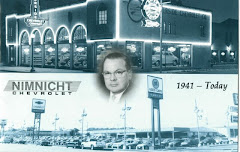Learning to drive a vehicle with a manual transmission can
be an intimidating task to both seasoned and new drivers alike. Approximately
6.5% of new vehicles sold in America feature stick-shift gearboxes. Vehicles
with manual transmissions come in all shapes and sizes, from small economy
cars, to massive work trucks, to high-speed sports cars. For those who would
like to experience what it’s like to drive a stick shift car, we’ve outlined the
basics for you below. Reading this blog is no substitute for hands-on learning,
so as with anything you try, be sure you give yourself ample amount of time to
practice.
Start by practicing with the car turned off. Familiarize
yourself with the vehicle’s controls. Leaving the emergency or parking brake
engaged, familiarize yourself with the clutch. Get a feel for using your left
foot to operate the clutch since in a vehicle with an automatic transmission
your left foot doesn’t have a job. Get acquainted with the gear shifter. Press
the gas pedal and the clutch and move the shifter to get a feel for the
different gears. Your reverse gear will also be an option controlled by this
shifter.
When you feel comfortable in knowing where the gears are,
test them out with a little off-road training. Find a level area, like an empty
parking lot, to practice in. Once you are comfortably seated with your seatbelt
fastened, it is time to start the car. If the car is neutral, you can start it
just as you would an automatic. If it is starting in gear, you’ll need to
depress the clutch before you start it. When the vehicle is running, press the
clutch to the floor, put the shifter in first gear, and slowly let the clutch
pedal up while at the same time applying your other foot to the gas pedal. The
car will begin to move and the more you let up on the clutch, the faster it
will move in that gear. When the car is
revving high in the first gear, it is time to change gears, and you will repeat
this process and shift up as needed according to your speed. You will also
down-shift the same way, applying the brake and clutch to slow down.
Once you feel comfortable with your parking lot training,
you’re ready to try the real road. Start on a less populated road and leave
ample space between you and other cars. As you practice and become more
experienced, driving a manual car will become second nature to you. Good luck!








 If you own a Saturn vehicle and you are unsure where you can take your car for a Factory Warranty and Repair, then here's a tip. Take your
If you own a Saturn vehicle and you are unsure where you can take your car for a Factory Warranty and Repair, then here's a tip. Take your 